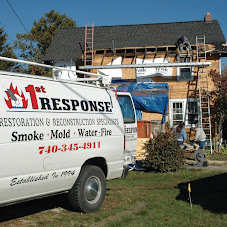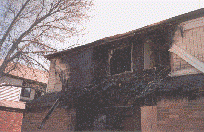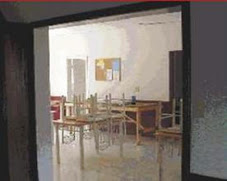•Beware of “fly-by-night” contractors or “storm chasers” who swarm the area after a storm. They may not be properly licensed or insured or may be using inferior materials and may be hard to locate later if there is a problem with their work.
•Ask for and check references. Trustworthy businesses should be able to direct you to references that will vouch for their credibility. Follow through and confirm the company’s reliability with multiple references before you hire.
•Beware of price gouging. Some unethical businesses may be marking up their products or services by as much as 500 percent. If you can wait to do any repairs until this busy time passes, do it.
•Make any temporary repairs, then take the time to hire ethical business contracts. Beware of companies who claim your home is structurally unsafe and needs expensive repairs.
•Check with your insurance company, and make sure to take pictures and document any repair needs as soon as possible.
•Compare bids, but determine which company will provide the best quality and not just the lowest price. Some “storm chaser” companies will offer rock-bottom prices, but may be unlicensed or providing inferior services. Legitimate contractors can provide a “Certificate of Insurance” that verifies they have current liability and workmen’s compensation coverage. Every consumer should verify that contractors are properly insured and licensed before allowing them to work on their property.
•Remember that reputable companies don’t ask for the entire fee up-front. Never pay more than one-third of the cost before repairs are complete. Also, pay by check or credit card instead of cash. These more secure methods of payment ensure that you will be more likely to track and retrieve your money in case of a scam.
1st Response is a FULL SERVICE contractor, specializing in restoration. CONTACT US
Call us at 740-345-4911.
Monday, May 23, 2011
Some DO's and DONT'S about flooding
How to safely clean affected areas due to flooding:
•Do not wade into standing water in your basement unless you are sure the electricity to your home is off.
•Unless you are certain basement flood waters came from around the foundation or from window wells, you should assume it contains sewage.
•Minimize skin exposure by wearing rubber boots and gloves and keep children and pets away from flood contaminated surfaces.
•As soon as the water is drained away, all wet items should be cleaned and thoroughly dried within 48 hours of flooding to prevent the growth of mold.
•When cleaning, items should first be washed with soap and water to remove visible debris and dirt. A disinfecting solution of one-half to three quarters cup of household bleach to one gallon of water should then be applied to the surface and allowed to air dry.
•Promptly fix any leaks in your home’s roof, walls or plumbing to eliminate moisture that could promote mold growth.
•Discard wet carpet, rugs and upholstery that cannot be easily cleaned to prevent mold growth.
•Keep the humidity level in your home between 40 and 60 percent to prevent mold growth.
•Do not wade into standing water in your basement unless you are sure the electricity to your home is off.
•Unless you are certain basement flood waters came from around the foundation or from window wells, you should assume it contains sewage.
•Minimize skin exposure by wearing rubber boots and gloves and keep children and pets away from flood contaminated surfaces.
•As soon as the water is drained away, all wet items should be cleaned and thoroughly dried within 48 hours of flooding to prevent the growth of mold.
•When cleaning, items should first be washed with soap and water to remove visible debris and dirt. A disinfecting solution of one-half to three quarters cup of household bleach to one gallon of water should then be applied to the surface and allowed to air dry.
•Promptly fix any leaks in your home’s roof, walls or plumbing to eliminate moisture that could promote mold growth.
•Discard wet carpet, rugs and upholstery that cannot be easily cleaned to prevent mold growth.
•Keep the humidity level in your home between 40 and 60 percent to prevent mold growth.
1st Response suggestitons .......
Craig Young and 1st Response say consider using the following flood damage prevention tips:
•Install a sewer backflow valve to prevent sewage from backing up into the house.
•Elevate water heaters, furnaces, washers and dryers at least six inches above basement floors or move them to an upper floor. Use a licensed contractor when making plumbing or electrical changes.
•Raise electrical panel boxes, switches, and outlets at least one foot above the 100-year flood level. For help in determining the 100-year flood level in your area, check with local officials.
•Cut drywall to at least one-half inch above the floor, especially in basements. Concrete floors commonly absorb ground moisture which travels up the wallboard allowing mold to grow unseen within the walls. Seal the gap between the wallboard and the floor with wood or rubberized floor trim.
•Anchor a fuel tank by securing it to a large concrete slab or to ground anchors using metal straps.
•Add waterproof veneer to exterior walls and seal all openings, including doors.
•Use flood-resistant building materials – materials that can withstand direct contact with floodwaters for at least 72 hours without being significantly damaged. These building materials are available at many home improvement stores.•Build interior and exterior floodwalls. A watertight masonry floodwall can be constructed to enclose furnaces, utilities and appliances on the lowest floor of the building. On the outside, a similar wall could be constructed around the perimeter of the basement opening to keep water from entering.
•Install a sewer backflow valve to prevent sewage from backing up into the house.
•Elevate water heaters, furnaces, washers and dryers at least six inches above basement floors or move them to an upper floor. Use a licensed contractor when making plumbing or electrical changes.
•Raise electrical panel boxes, switches, and outlets at least one foot above the 100-year flood level. For help in determining the 100-year flood level in your area, check with local officials.
•Cut drywall to at least one-half inch above the floor, especially in basements. Concrete floors commonly absorb ground moisture which travels up the wallboard allowing mold to grow unseen within the walls. Seal the gap between the wallboard and the floor with wood or rubberized floor trim.
•Anchor a fuel tank by securing it to a large concrete slab or to ground anchors using metal straps.
•Add waterproof veneer to exterior walls and seal all openings, including doors.
•Use flood-resistant building materials – materials that can withstand direct contact with floodwaters for at least 72 hours without being significantly damaged. These building materials are available at many home improvement stores.•Build interior and exterior floodwalls. A watertight masonry floodwall can be constructed to enclose furnaces, utilities and appliances on the lowest floor of the building. On the outside, a similar wall could be constructed around the perimeter of the basement opening to keep water from entering.
Labels:
1st response,
central ohio,
craig young,
first respoonse,
flood,
newark,
water
Subscribe to:
Posts (Atom)












